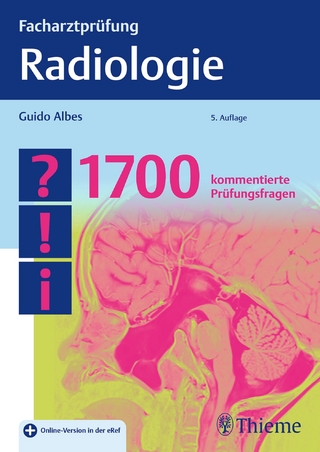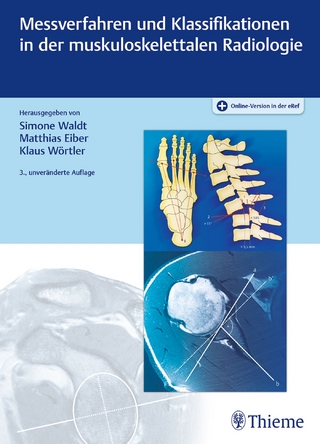
Clinical Echo-Encephalography
Springer-Verlag Berlin and Heidelberg GmbH & Co. K
978-3-540-04323-2 (ISBN)
- Titel ist leider vergriffen;
keine Neuauflage - Artikel merken
Now we can frequently outline the width of the ventricles exactly and localize tumors or hematomas by means of abnormal reflections. Since a detailed description of the technique, application and present-day diagnostic uses of echo-encephalography has not been available as yet, we undertook to fill this gap in the German literature in 1967 with a monograph summarizing the hitherto existing experience as well as our own extensive case mate- rial.
I. Fundamental Principles of Acoustics and its Methodology.- A. Introduction.- B. Fundamental Principles of Acoustics.- 1. Sound, Infrasound, Ultrasound.- 2. Sound Propagation, Sound Velocity, Sound Fields.- 3. The Production of Plane Sound Waves.- 4. Elements of the Sound Field.- 5. Echoes.- 6. The Propagation of Plane Sound Waves in an Absorbing Medium.- C. Detection of Structures within the Skull by Means of Echoes.- 1. Inaccuracy in Localization.- 2. Inaccuracy in Resolution.- D. Energy Balance of Echoes from Structures within the Skull.- E. Tissue Reactions to Ultrasonic Radiation.- F. The Use of Ultrasound in Medical Diagnostics.- G. The Pulse-Echo Method Applied to the Skull.- 1. Principles of the Method.- 2. Construction and Mechanism of the Pulse-Echo Apparatus.- 3. Probes.- H. The Technique of Investigation.- 1. Calibration of the Echo-Encephalograph.- 2. Technique of Investigation and Operation of the Apparatus.- II. General Echo-Encephalography. - The Reflections on the Echo-Encephalogram and their Origins.- A. The Normal Echo-Encephalogram.- 1. Initial Echo (Initial Complex).- 2. End Echo (Bottom Echo, Far Side Echo).- 3. Midline Echo (M-Echo).- a) Pineal Body.- b) Septum Pellucidum.- c) Interhemispheric Fissure.- d) Cerebral Falx.- e) Third Ventricle.- 4. The Lateral Reflections.- a) Echoes from the Lateral Ventricles.- b) Reflections from the Choroid Plexus of the Lateral Ventricles.- c) Reflections from the Sylvian Fissure Region.- d) Reflections from the Subarachnoid Spaces.- e) Other Lateral Reflections.- 5. Echo-Pulsations.- B. The Pathological Echo-Encephalogram.- 1. Demonstration of a Supratentorial Mass Shift by a Displacement of the Midline Echo.- Identification of the Midline Echo.- 2. Demonstration of Ventricular Dilatation.- a) Recording an Abnormal Double Echo from the Walls of the Third Ventricle.- b) Registration of Abnormally Located Lateral Ventricle Echoes - Echo-Encephalographic Brain Mantle Index (BMI).- 3. Direct Demonstration of Tumors, Hematomas and Cysts.- a) Tumor Reflections, Cyst Wall Echoes.- b) Demonstration of Hematoma Interfaces.- Experimental Investigations on the Question of Hematoma Echoes.- 4. Abnormal Echo-Pulsations.- C. Misinterpretations of Echo-Encephalograms.- D. Accuracy of Echo-Encephalographic Findings in Comparison with the Results of Contrast Medium Studies.- III. Special Echo-Encephalography.- A. The Echo-Encephalogram in Healthy Subjects.- 1. Infants and Children.- 2. Adults.- B. The Echo-Encephalogram in Brain Tumors.- 1. Suspected Brain Tumors.- 2. Tumors of the Cerebral Hemispheres.- Relationship between Midline Echo Shift and Tumor Localization.- Tumors of the Cerebral Hemispheres without Midline Echo Displacement.- Demonstration of the Third Ventricle in the Echo-Encephalogram with Tumors of the Cerebral Hemispheres.- Reflections from Tumor Tissue and Cyst Walls with Tumors of the Cerebral Hemispheres ("Tumor Echoes").- Postoperative Findings and Long-Term Observations.- a) Acute Phase Following Operation.- b) Long-Term Follow-up Studies, Recognition of Recurrences.- 3. Tumors of the Oral Brain Stem and Corpus Callosum.- Thalamus and Basal Ganglia.- Hypothalamus and Anterior Part of the Third Ventricle.- Posterior Part of the Third Ventricle and Quadrigeminal Region.- Craniopharyngiomas.- Corpus Callosum.- 4. Tumors at the Base of the Skull.- 5. Tumors of the Posterior Fossa and Caudal Brain Stem.- Case Histories.- Postoperative Examinations.- Recognition of Recurrences.- 6. Summary of the Echo-Encephalographic Results in Brain Tumors.- C. The Echo-Encephalogram in Head Injuries.- 1. Brain Concussion - Mild Closed Head Injuries.- 2. Brain Contusion - Moderate and Severe Open and Closed Head Injuries.- 3. Posttraumatic Intracranial Hematomas.- a) Epidural Hematoma.- Diffentiating the Dura Echo from Other Reflections.- Case Histories.- Discussion of the Echo-Encephalographic Results with Epidural Hematomas.- b) Acute and Subacute Subdural Hematoma.- Case Reports.- c) Intracerebral Hematoma.- d) Chronic Subdural Hematoma, Unilateral and Bilateral.- Case Reports.- e) Differential Diagnosis of Posttraumatic Intracranial Hematomas Using Echo-Encephalography.- f) Differential Diagnosis between Postcontusional Edema and Posttraumatic Intracranial Hematoma Using Echo-Encephalography.- g) Echo-Encephalographic Findings with Head Injuries and Indications for Carotid Angiography.- 4. Sequelae of Head Injuries.- D. The Echo-Encephalogram in Cases of "Stroke".- 1. Encephalomalacia (Occlusive Cerebrovascular Disease).- 2. Cerebral Hemorrhage.- 3. Spontaneous Subarachnoid Hemorrhage.- 4. Echo-Encephalographic Differentiation between Hemorrhage and Brain Softening.- 5. Postapoplectic States, Atrophic Processes.- E. Echo-Encephalography with Infantile Hydrocephalus.- F. Other Applications of Echo-Encephalography.- 1. Subdural Effusions and Hematomas in Infants and Children.- 2. Infantile Brain Damage, Cerebral Malformations.- 3. Chronic Epilepsy.- 4. Miscellaneous.- G. Possibilities and Limitations of One-Dimensional Echo-Encephalography (A-Scan).- Appendix: Two-Dimensional Pulse-Echo Technique in the Diagnosis of Intracranial Lesions (B-Scan).- References.
| Co-Autor | W. Guttner |
|---|---|
| Übersetzer | Margareta Klinger |
| Zusatzinfo | 241 black & white illustrations, 4 colour illustrations, biography |
| Verlagsort | Berlin |
| Sprache | englisch |
| Gewicht | 850 g |
| Themenwelt | Medizinische Fachgebiete ► Radiologie / Bildgebende Verfahren ► Radiologie |
| Medizinische Fachgebiete ► Radiologie / Bildgebende Verfahren ► Sonographie / Echokardiographie | |
| Naturwissenschaften ► Physik / Astronomie ► Mechanik | |
| ISBN-10 | 3-540-04323-3 / 3540043233 |
| ISBN-13 | 978-3-540-04323-2 / 9783540043232 |
| Zustand | Neuware |
| Haben Sie eine Frage zum Produkt? |
aus dem Bereich


